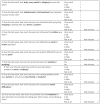Association of Myo-Inositol and Microlipodispersed Magnesium in Androgen-Dependent Dermatological Diseases: A Retrospective Study
- PMID: 40006064
- PMCID: PMC11859446
- DOI: 10.3390/ph18020251
Association of Myo-Inositol and Microlipodispersed Magnesium in Androgen-Dependent Dermatological Diseases: A Retrospective Study
Abstract
Background: Acne is a pathology of the pilosebaceous unit. It is characterized by a highly complex etiopathology which includes inflammation, hyperkeratinization, increased sebum production, colonization of Cutibacterium acne, hyperandrogenemia, and hyperinsulinemia. This condition, together with hirsutism, androgenic alopecia, and acanthosis nigricans, are highly prevalent cutaneous manifestations of the polycystic ovary syndrome (PCOS). While conventional therapies represent effective treatment options, they are not free from side effects which may reduce compliance. In this context, considerable attention has been directed toward nutraceutical supplements, which include different molecules with great potential to reduce inflammation, hyperkeratinization, hyperseborrhea, and hyperinsulinemia. Myo-inositol has been shown to be effective in improving some of the signs and symptoms of patients with microcystic ovaries: reducing body mass index (BMI), testosterone free levels, dehydroepiandrosterone sulfate (DHEAS) levels, and improving ovarian function and insulin sensitivity. Methods: The authors conducted a retrospective study that included 200 patients suffering from PCOS. Over 6 months, they analyzed the effects of the supplementation of LEVIGON™ (Sanitpharma; Milan, Italy)-a specific nutraceutical formulation containing myo-inositol, microlipodispersed magnesium, and folic acid-on the clinical picture of acne and hirsutism. Results: The supplementation of LEVIGON™ showed a significant reduction of BMI, testosterone, testosterone free, and DHEAS levels, thus improving the clinical picture of acne and hirsutism. Moreover, the impact of acne on the quality of life, assessed using the Cardiff Acne Disability Index (CADI) and Dermatology Life Quality Index (DLQI) scale, improved significantly after 3 and 6 months. Women with hirsutism benefited also from a significant improvement of the Ferriman-Gallwey score after both 3 and 6 months (p < 0.0001; p < 0.0001 respectively compared to the baseline). Conclusions: Myo-inositol supplementation, associated with microlipodispersed magnesium in a bioaccessible form, proved to be extremely useful in reducing acne and hirsutism in patients suffering from microcystic ovaries. In addition, there were no side effects, thus confirming excellent compliance. Further long-term randomized clinical trials are needed to confirm this preliminary evidence.
Keywords: PCOS; acne; folic acid; hirsutism; magnesium; myo-inositol.
Conflict of interest statement
The authors declare no conflicts of interest.
Figures






Similar articles
-
Prevalence of dermatologic manifestations and metabolic biomarkers in women with polycystic ovary syndrome in north China.J Cosmet Dermatol. 2018 Jun;17(3):511-517. doi: 10.1111/jocd.12387. Epub 2017 Sep 21. J Cosmet Dermatol. 2018. PMID: 28940857
-
Efficacy of myo-inositol in the treatment of cutaneous disorders in young women with polycystic ovary syndrome.Gynecol Endocrinol. 2009 Aug;25(8):508-13. doi: 10.1080/09513590903015544. Gynecol Endocrinol. 2009. PMID: 19551544
-
Polycystic ovary syndrome (PCOS) and hyperandrogenism: the role of a new natural association.Minerva Ginecol. 2015 Oct;67(5):457-63. Minerva Ginecol. 2015. PMID: 26491824 Clinical Trial.
-
Androgen excess: Investigations and management.Best Pract Res Clin Obstet Gynaecol. 2016 Nov;37:98-118. doi: 10.1016/j.bpobgyn.2016.05.003. Epub 2016 May 19. Best Pract Res Clin Obstet Gynaecol. 2016. PMID: 27387253 Review.
-
Polycystic ovary syndrome: a review for dermatologists: Part I. Diagnosis and manifestations.J Am Acad Dermatol. 2014 Nov;71(5):847.e1-847.e10; quiz 857-8. doi: 10.1016/j.jaad.2014.05.007. Epub 2014 Oct 15. J Am Acad Dermatol. 2014. PMID: 25437977 Review.
Cited by
-
New Perspectives on Nutraceutical Insulin Sensitizing Agents in the Treatment of Psoriasis and Other Dermatological Diseases.Int J Mol Sci. 2025 Aug 4;26(15):7538. doi: 10.3390/ijms26157538. Int J Mol Sci. 2025. PMID: 40806666 Free PMC article. Review.
References
LinkOut - more resources
Full Text Sources

